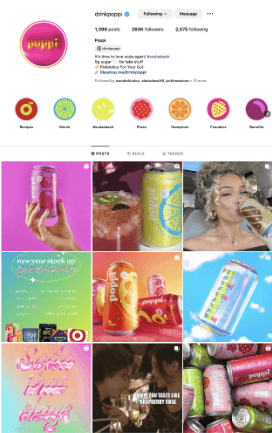In today's digital age, I think most brands know by now that utilizing social media is one of the most important things you can do for your brand. And storytelling on social media is more relevant than ever before –– where cat videos are just as important as news updates. So, let's take a deep dive into the art of storytelling through social media and how the right content can elevate your narrative.
According to CBS News, the average American spends roughly 7 hours on their phone each day –– and I don’t think we’d be surprised if half of this time was spent on social media. While it does get its fair share of critique, brands can recognize its importance in connecting with audiences and building trust.
When utilizing social media, there are different visual content you can take hold of: photos, videos/reels, carousel posts, GIFs and more. Hootsuite reveals that both LinkedIn and Twitter have higher engagement when visuals are included.
But how do you make your content not just scroll-past worthy but stop users in their tracks? That’s where the art of storytelling comes in.
1. Know your audience.
You can only create content once you know the people you’re trying to reach. So, research the content they engage with most and tailor your posts accordingly.
Do they like to see short videos or long ones? Do they interact more with carousel posts or graphics?
2. Identify the story you’re trying to tell and create a narrative that aligns with it.
Here you really want to dive into the story you’re trying to convey –– is it emotional, are you wanting to take your followers through a journey, are you trying to educate them? Will it be short and snappy, long and thought-provoking content or both? Next, you need to develop a narrative that aligns with the story you are trying to tell to have a lasting impact on your audience. Have it describe your brand and what you want to put out in the world. What is your why? What are your values? What will your followers get out of your content? What is your mission?
3. Establish a color palette.
Creating a color palette for your brand makes content instantly recognizable to the eye. It can evoke specific feelings or associations in the mind and can enhance your brand’s visual identity and narrative.
Poppi does a great job of making their Instagram feed look cohesive with images and graphics that contain bright colors –– which keeps them memorable.

Check out this color palette generator from Hootsuite.
4. Now, make sure each visual piece of content conveys a story.
Always, always, always use high-quality photos and videos. Each piece of this visual content should tell a story, capturing attention, evoking emotion or educating. The aim is not just to create content but to create a narrative that resonates with your audience.
Does the photo attract your eye or convey an emotion? Does the video make you want to watch more? Does the infographic educate you on something you might not have known about?
Nike is one of my favorite brands for knowing how to tell a story and evoke emotion in their viewers.
5. Last but not least, don’t be afraid to use user-generated content!
User-generated content or UGC, is a great opportunity for you to really connect with your audience and come across as authentic. It allows your audience to interact with your brand and take part in your story. It also builds trust and loyalty –– and it’s easy advertising!

Delta does a great job of harnessing user-generated content by sharing photos and videos of people traveling. Like the post above, Delta is tapping into the human side of their brand –– by showcasing a real family traveling thanks to Delta. This helps their audience see that there are people just like them traveling the world which could influence them to travel through Delta as well. It’s subtle but strong.
Stories are all around us in our daily lives. By using this to your advantage on social media, brands can really build trust with their audience and leave a lasting impression. Also remember that there is a lot to play around with when creating content on social media –– experimentation is key. Over time, you’ll learn what resonates best with your audience and from there you can continue to tailor content to fit your brand’s narrative.
Now, get creating!











